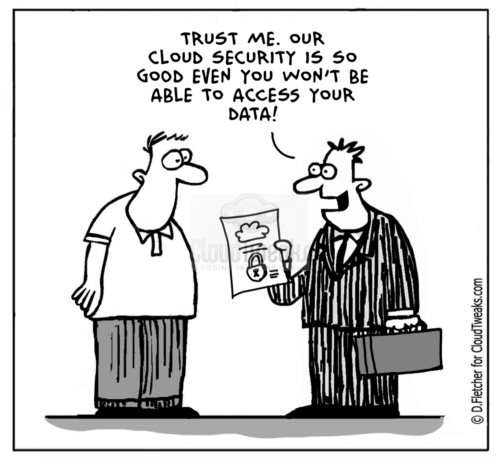
What is Network Security?
Network security is a strategic approach to securing an organization’s resources and data across the corporate network. It helps protect organizations of all sizes, industries, and infrastructure against cybersecurity threats and unauthorized access.
Network security strategies incorporate various technologies, processes, and devices, using rules and configurations to protect specific computer networks and their data. It involves using network security software and hardware technology to maintain the integrity, confidentiality, and accessibility of all computers and data.
Why is Cloud Network Security Important?

Migrating to a cloud environment increases the attack surface. An on-premises IT infrastructure requires protection primarily against security threats and vulnerabilities within the perimeter. The more cloud environments you include within the infrastructure, the more the attack surface increases.
Protecting the modern network
The modern network consists of on-premises resources and public, private, and hybrid cloud environments. Adopting cloud security helps minimize the attack surface and reduce cybersecurity risks.
A core security layer
Cloud network security is a core layer of cloud security required to protect the IT resources, applications, and data residing within cloud environments and the traffic moving between clouds and intranet and on-premises data centers. It helps organizations satisfy regulatory requirements and maintain security under the shared responsibility model.
Closing security gaps in the cloud
Cloud network security solutions help close the security gaps opened when organizations migrate to the cloud. Organizations leverage these tools to align cloud security monitoring and threat prevention with those protecting on-premises environments, achieving the same security level across all environments despite the dissolving network perimeter.
How Does Cloud Network Security Work?
Cloud environments route traffic across the infrastructure using software-defined networking (SDN). Cloud network security tools integrate with various virtualization solutions and cloud platforms, deploying virtual security gateways to provide visibility and control.
Cloud network security tools help perform security monitoring, segmentation, and threat prevention for network traffic. Virtual security gateways are virtualized and hosted in the cloud but work similarly to on-premises security gateways.
Here are the core features of cloud network security solutions:
A full network security stack
Cloud network security tools integrate all features needed to protect an enterprise network, including intrusion prevention systems (IPSes), next-generation firewalls (NGFW), antiviruses, URL filtering capabilities, application control, identity awareness, anti-bot, and data loss prevention (DLP).
Zero-day protection
Zero-day attacks leverage vulnerabilities and exploit kits that organizations are unaware of the vulnerability or have not applied a patch on time. Cloud network security solutions provide zero-day protection to address the rapidly changing threat landscape.
SSL/TLS traffic inspection
Encrypted network traffic makes it more difficult to identify and block malicious connections. Network security solutions provide SSL/TLS traffic inspection with minimal latency.
Network segmentation
Network segmentation enables organizations to minimize cybersecurity risk and make it difficult for attackers to move laterally across the network. Cloud network security tools help implement network segmentation and microsegmentation in various cloud environments.
Unified security management
Cloud environments increase the attack surface, making it more complex to perform security monitoring and threat management. Cloud network security tools can integrate with existing on-premise solutions to maximize operational efficiency, ensuring security teams have a centralized location to manage security across all clouds and on-premises networks.
Secure remote access
Using cloud computing to facilitate an increasingly remote workforce requires giving end-users remote access to cloud resources. Cloud network security tools facilitate secure and scalable remote access to cloud infrastructure.
Content sanitization
Network security solutions go beyond blocking potentially malicious content. These tools can remove malicious, executable content while giving users access to sanitized content.
Third-party integrations
Cloud network security tools operate within a cloud vendor’s environment alongside the vendor’s existing tools and services. These tools must offer integrations with various third-party solutions to ensure optimal configuration management, security automation, and network monitoring.
Strategies to Minimize Risk in Cloud Network Security
Organizations can adopt various practices to minimize risk across cloud networks, such as DevSecOps and employee security awareness training. However, the most effective way to implement these measures is to first define a security baseline for the organization’s cloud environment.
Defining a security baseline
This baseline defines the security aspects of certain cloud networks. It ensures all stakeholders, including security personnel, IT operations, engineers, and DevOps teams secure the network regularly and consistently. A security baseline helps address various cloud network security challenges, such as ease of deployment, shared responsibility, and speed of change.
Using frameworks and benchmarks
A network security baseline specifies the cloud environment’s architecture, defining how each asset type is configured and who gets read or write access to different areas of the environment. Organizations often leverage CIS Benchmarks and the AWS Well-Architected Framework to guide them as they define this baseline.
Mapping incident response
An effective network security baseline maps the organization’s incident response plan and clearly defines one or more roles responsible for certain aspects of cloud security regularly. Ideally, organizations should regularly revisit and update this plan to reflect new and emerging threats and recommended best practices.
Implementing the baseline
After creating a baseline, the organization needs to communicate it to all parties with access to cloud networks. The security team should work with DevOps to implement various measures to enforce the baseline. Here are several best practices:
- Create cloud infrastructure templates with the standard configurations.
- Implement continuous monitoring to identify outdated or changed components and those that fail to follow the baseline.
- Include an embedded agent within virtual machine (VM) templates to achieve continuous monitoring and vulnerability detection from the time of deployment.
Protecting multi-cloud and hybrid cloud environments
Securing hybrid and multi-cloud environments typically requires reassessing existing security measures and locating legacy tools that cannot support cloud networks. Using different tools to secure cloud environments and on-premises can overwhelm a team with too many security tools that do not provide adequate visibility and control.
Organizations can protect hybrid and multi-cloud environments by implementing tools that centralize security management across the entire IT ecosystem. Here are some tools that can help:
- Vulnerability management tools—continuously monitor and identify vulnerabilities across cloud environments, on-premise networks, remote endpoints, and containers. These solutions can also locate misconfigured cloud assets.
- Security information and event management (SIEM) solutions—aggregate data from all locations, including cloud and on-premises networks and systems. These solutions use this data to automatically identify threats and help security teams immediately respond to security incidents.
- Security automation tools—help secure cloud networks by ensuring teams can keep up with rapidly changing cloud networks. These tools can share data between different systems to extend visibility, eliminate repetitive work to increase productivity, and immediately respond to security incidents to minimize damage.
Conclusion
In this article, I explained the basics of network security and strategies to minimize cloud network security risks:
- Defining a security baseline—This baseline defines the security aspects of certain cloud networks.
- Using frameworks and benchmarks—Organizations often leverage benchmarks and frameworks to guide them as they define this baseline.
- Mapping incident response—An effective network security baseline maps the organization’s incident response plan and clearly defines roles responsible for certain aspects of cloud security.
- Implementing the baseline—The security team should work with DevOps to implement various measures to enforce the baseline.
- Protecting multi-cloud and hybrid cloud environments—Organizations can protect hybrid and multi-cloud environments by implementing tools that centralize security management across the entire IT ecosystem.
I hope this will be useful as you implement cloud network security in your organization.
By Gilad David Maayan
Originally posted on December 14, 2022 @ 1:00 pm


